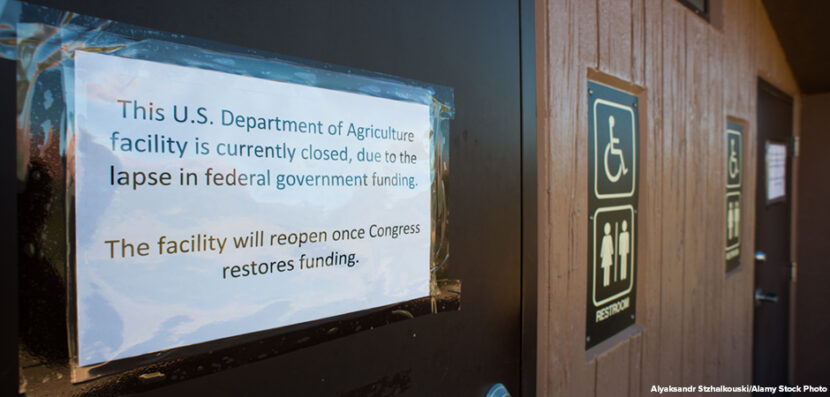
The Continuing Federal Government Shutdown
Currently, the United States federal government in Washington, D.C., is experiencing its first shutdown in nearly seven years. Now in its third week, the shutdown may become the second-longest in history. But why, and what does it mean for regular citizens when the government shuts down? Here, Election Central takes a closer look.
What Happened?
The current shutdown began on October 1, 2025, when congressional Democrats and Republicans couldn’t come to an agreement on the federal budget. The key point of disagreement has to do with health care. During the COVID-19 pandemic in 2020 and 2021, the Democratic-controlled Congress put many tax credits in place to help people pay for their health care. But those tax credits are about to expire in 2025.
The current Democrats in Congress are saying they will refuse to agree to a budget that doesn’t include a guarantee that those tax credits will continue. Without them, many Americans could face the loss of their health care coverage or drastically increasing premium prices. Congressional Democrats are also insisting that the Trump administration reverse its cuts to Medicaid, which is how many elderly, low-income, and disabled citizens afford health care.
The Republicans have responded by saying they will discuss the health care tax credit extensions after the budget is passed and the government funding can begin again.
What Does a Shutdown Mean?
The government employs more than two million civilian employees. When there is a shutdown, most of them are furloughed, meaning that they no longer go to work. Some employees who perform certain essential services, mail service, border control, and law enforcement, for example, must still report to work. Everyone still receives pay, including the workers who are furloughed, but those paychecks will not be delivered until after the shutdown is over. So federal employees are not getting paid right now.
The cost to the federal government paying furloughed workers comes to about $400 million per day. But even so, many furloughed federal workers can’t afford to wait weeks to receive their delayed paychecks. So, the Capital Area Food Bank has announced that it will hold extra food distributions to help federal workers and their families.
What’s the Economic Impact?
A federal government shutdown, especially a lengthy one, can have an impact on the economy as well. Economists estimate that a shutdown slows economic growth by 0.1 to 0.2 percentage points per week. Different industries are affected in different ways. The travel industry suffers because tourists are not travelling to Washington, D.C. (All of the museums are closed.) Many major national parks and monuments across the country are closed as well. The Small Business Administration has stopped granting loans to small businesses, which could cause businesses to close. And furloughed air traffic controllers means that many flights around the country have been delayed and cancelled. Military workers received a paycheck last week, but there is no guarantee when their next paycheck will come.
Political Controversy
President Trump has also said his administration may use the shutdown as an opportunity to fire many federal workers permanently. So far, mass reductions already have been announced at the Treasury Department; the Department of Health and Human Services; the Department of Education; and the Department of Housing and Urban Development. The administration has indicated that further cuts are possible. Currently, a federal judge has temporarily blocked the firings for being politically motivated.
In the meantime, it is not known how long this shutdown will last. While congressional Republicans and Democrats have been meeting to talk one-on-one to search for a compromise, so far, those talks have not led to progress.


